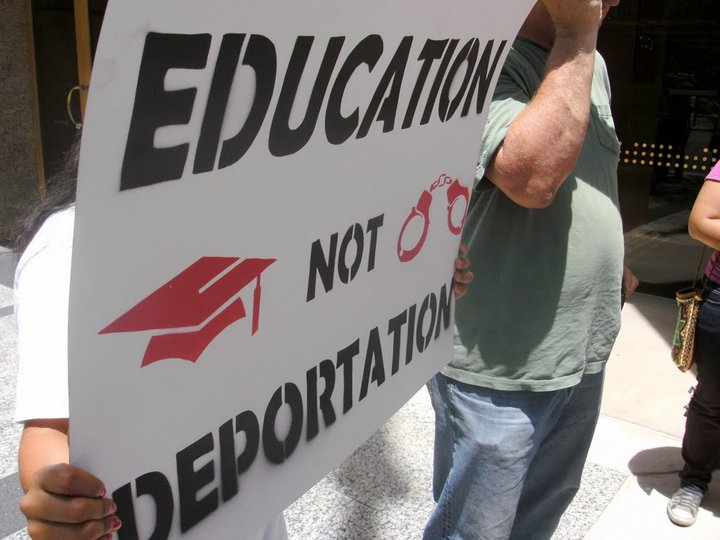
Earlier today, the House defeated a bill purported to address DACA (Deferred Action for Childhood Arrivals) and other immigration issues. The vote was 121 to 301. All Democrats and 112 Republicans voted no. What follows is a brief explainer of how we got here and what happens next, in both political and human terms.
Congress Fails to Act. Yet Again.
In May, moderate Republicans and a wide swath of Democrats initiated a discharge petition that, if it had received 218 signatures, would have forced a floor vote on four amendments – two sponsored by Republicans, one by Democrats, and one with bipartisan co-sponsorship. In what’s known as a “Queen of the Hill” scenario, the amendment with the most votes would have prevailed.
Speaker Paul Ryan, concerned that the winning bill might split his caucus and caught-up in a maelstrom of controversy over parental separations at the Mexican border, convinced Republican moderates to put the brakes on the discharge petition when it was just two signatures short of the magic number and all but one Democrat had already signed. Ryan promised votes on two bills: the conservative “Goodlatte” bill and a Ryan “compromise.”
Last week, the Goodlatte bill failed 193-231. Every Democrat and 41 moderate Republicans voted no because it fell far short on DACA and included an array of draconian immigration provisions. It wasn’t a total loss for Ryan and House conservatives. House rules are such that consideration of the Goodlatte bill voided the discharge petition.
The purpose of Ryan’s compromise was, supposedly, to: address his moderates’ concerns about DACA; end family separations taking place at Mexican border; and, go farther than necessary on border enforcement to placate conservatives. It failed on all three fronts. Ryan’s compromise provided a pathway to citizenship for less than 20 percent of current DACA youth. Only a third would have been eligible to receive any sort of protection.
Let’s not forget that Trump is the one who told the Senate he’d support their bipartisan DACA deal only to turn around and kill it by vociferously opposing it based, in the opinion of most observers, on his desire to exact revenge on Senator John McCain for voting against the Senate’s attempted repeal of Obamacare.
As a result, the only protections for DACA youth right now come via court rulings that are in a severe state of flux and uncertainty.
Litigation Determines DACA’s Fate
Two major cases are in play around DACA. First, a U.S. District Judge ruled on April 25 that the administration had to re-instate the full DACA program, meaning previous recipients should be allowed to reapply and the program should be re-opened to all DACA-eligible youth. However, the judge gave the Department of Homeland Security (DHS) 90 days to “better explain its view.” With the deadline less than a month away, DHS has yet to submit anything to the court. This was the third judge to rule against DACA’s end but the ruling as it stands now is symbolic given the delay in its enforcement.
Second, in early May, Texas and six other states led by Republicans filed suit against the federal government for not ending DACA. If the judge’s ruling favors Texas et al. it would be in conflict with three other cases, federal agencies would be faced with conflicting orders, and the DACA mess would head to an increasingly conservative Supreme Court. In the meantime, 632,000 DACA-eligible youth are locked out of protections and the ability to work legally, while an additional 700,000 current DACA recipients continue to live injunction to injunction.
Keeping Families Together
In May, the administration began the unprecedented practice of prosecuting all adults crossing illegally, including those seeking asylum or fleeing extreme violence in their home countries. Because adults are incarcerated while they’re waiting for a court date, children therefore cannot be housed with them and must be detained separately. The Trump executive order (EO) last week claims to end the separation of families, but the situation is actually much more complicated than that.
By all reports, the EO was hastily written. One flaw is that the EO conflicts with the 1997 Flores settlement which states that children cannot be detained for an unreasonable amount of time, generally interpreted as about 20 days. That cannot be fixed by an EO and would require Congressional action which, as explained above, current leadership has not been able to manage on any immigration issue. There’s little evidence that Trump’s EO, thus far, has reunited more than a handful of children with their parents.
Meanwhile, asylum seekers are having a hard time getting their cases heard. Immigration courts are backlogged with only 334 judges to hear over 700,000 cases. Moreover, Secretary Sessions recently announced guidance that makes it harder to seek asylum. This combination of factors has led to chaos at the border and turmoil for families. Conflicting reports came out over the weekend on how the federal government would reunite families, but Tuesday night, a California judge ruled that the administration must reunite children younger than five in the next 14 days and all children in the next 30 days
The Administration’s zero-tolerance policy created the current mess at the border. There are cheaper, more humane alternatives to family detention which Trump has shown no interest in pursuing. The Obama Administration’s “Family Case Management Program,” which released families seeking asylum and paired them with social workers, was 99 percent effective in ensuring families show up for court appearances.
What’s happening is inhumane. Moreover, immigration issues have huge implications for education, for both students and their teachers. The separation of children from their parents will have lifelong impacts on their learning and development. DREAMers’ access to education currently is limited, and neither those who have completed their educations, nor society as a whole, can reap the benefits of those earned degrees.
For more information, see other work by ERN on the intersection of education and immigration issues.